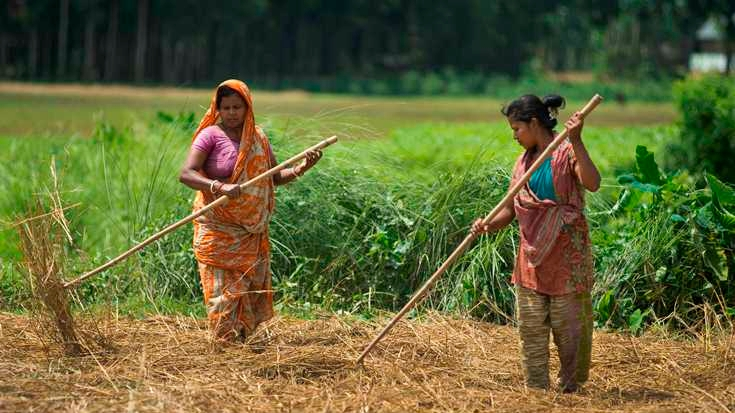GET IN TOUCH
- Please wait...

This letter was originally sent to LightCastle Bimonthly Newsletter subscribers.
There is nothing new about economists arguing for greater budget allocation to sectors that demand higher national priorities. Interestingly, agriculture—expected to be one of the most critical drivers of foreign currency next to RMG and remittance—has been shown a backseat in the recent budget declaration.
For fiscal year 2024-25, the Bangladesh government allocated less than 6% of its total budget to agriculture. Compared to 2023-24, the total allocation has markedly declined by more than 15%. No other critical sectors have received as big of a hit.
Within this year’s cumulative scope (operating and development), less than 2.5% is apportioned to development, albeit exhibiting a significant 40% rise over last year’s corresponding figure. This increase in the development budget for the Ministry of Agriculture (MoA) suggests a shift towards long-term agricultural development projects.
In line with the Perspective Plan of Bangladesh 2021-41 and Bangladesh Delta Plan 2100, agriculture strategic priorities take a holistic approach. It aims to ensure food security and nutrition through increasing productivity, minimizing yield gaps, stabilizing prices of agricultural commodities, strengthening agricultural supply chains, increasing commercialization through digital technologies, easing credit facilities for smallholders, and ensuring efficient utilization of natural resources among others.
By committing a 40% jump in the development budget, the government is exhibiting signs of intent to bring about improvements in agricultural infrastructure, research, and technology adoption. Done right, this sure can enhance the sector’s productivity and sustainability in the long run. However, the immediate benefits might not be felt by the farmers who are facing increased input costs.
Subsidies, in particular, are downgraded by nearly BDT 8,000 Cr, indicating less sum at disposal for supporting inputs and machinery to farmers—particularly smallholders. Bangladesh, still being a food-deficient country with a rising population against a receding land mass, needs to ensure higher yields per acre. A good way of doing that is by promoting the uptake of modern technologies and agri machinery.
Moreover, large landfills are left unused due to a lack of irrigation facilities and heightened salinity. A closer look at the budget reveals a 30% drop in the development component under the Ministry of Water Resources, a sub-category under MoA. Prioritizing larger sums could have opened new opportunities for crop diversification alongside rice cultivation, increasing the odds of export earnings and achieving food security.
Amid a food inflation rate averaging 10.67% over the past 11 months, economists emphasized the necessity of boosting production to mitigate rising global food prices and slowing production rates. Furthermore, they argue for the sector to become sustainable, commercialization is crucial. And to that end, a greater supply of capital is the clarion call of the hour.
If the primary goal of a budget is to curb inflation and increase food supply, sadly the reflection in agriculture leaves a lot to be desired. While this may bring about boons in the future, having a more pragmatic approach by balancing short-term needs—especially for smallholders—should have been considered.
This article was authored by Ivdad Ahmed Khan Mojlish, Director at LightCastle Partners. For further clarifications, contact here: [email protected]
Our experts can help you solve your unique challenges
Stay up-to-date with our Thought Leadership and Insights